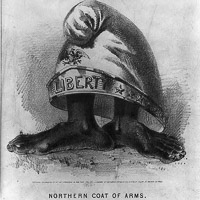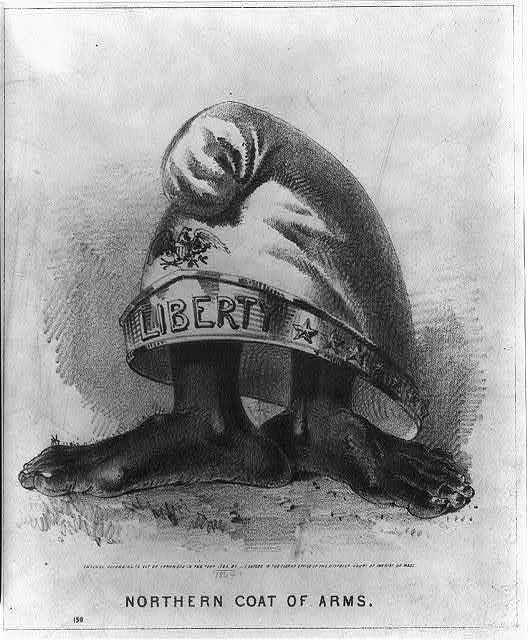My Social Studies Methods class at the University of Portland recently published a free multi-touch iBook – Exploring History: Vol III (Free iTunes). It features thirteen engaging questions and historic documents that empower students to be the historian in the classroom. For more info on our project and free download of multi-touch iBook and pdf versions click here. To better publicize student work, I’m featuring each chapter in it’s own blog post. (First of 13)
Reconstruction in Political Cartoons by EmmaLee Kuhlmann
Download lesson as PDF (8.3MB)
In this lesson, students will examine various political cartoons and other images from around the United States printed during Reconstruction. They will be asked questions of each image which will help them perform close reading skills and help them come to a conclusion about how the different types of American citizens experienced Reconstruction. Essential Questions:
- How did Americans across the country experience the period of Reconstruction differently?
- How did their experience influence their perceptions of Reconstruction policies and the government and society of the United States following the Civil War?
- In what ways are political cartoons useful in exploring how people understood Reconstruction?
- Are political cartoons a good primary source?
Project Reflection by EmmaLee Kuhlmann
In secondary history classes, topics such as Reconstruction are rarely discussed; if they are, very little time is spent uncovering the controversy and complexity of the time period. However, Reconstruction is a period in America’s history that began the current stream of history. By understanding the period following the Civil War, students can begin to see how America’s history has shaped its present. For instance, certain racial policies enacted during Reconstruction played a major role in Americans’ later perceptions of race and racial constructs. It isn’t an easy time period to untangle, certainly another reason why it rarely is at the secondary level. However, giving students primary sources to discuss and explore give them an effective entry point into the time period and the topics surrounding some difficult issues of Reconstruction.
At the end of this particular lesson, numerous different activities could be assigned. In the creation of this lesson, I wanted to leave the final product/assignment open because there are so many creative ways to assess understanding of the cartoons and the ideas and values they present. When I discussed possible options for closing assignments for this lesson, various suggestions were given. My favorite assignment idea was to have students create their own political cartoon using similar themes and imagery from the cartoons that they explored in the lesson. This could be done either about Reconstruction issues or even current events. This would allow students to make connections across topics and time periods.
Image credit: Library of Congress LC-USZ62-19673
Title: Northern coat of arms
Related Names: Baker, Joseph E
Date Created/Published: 1864.


